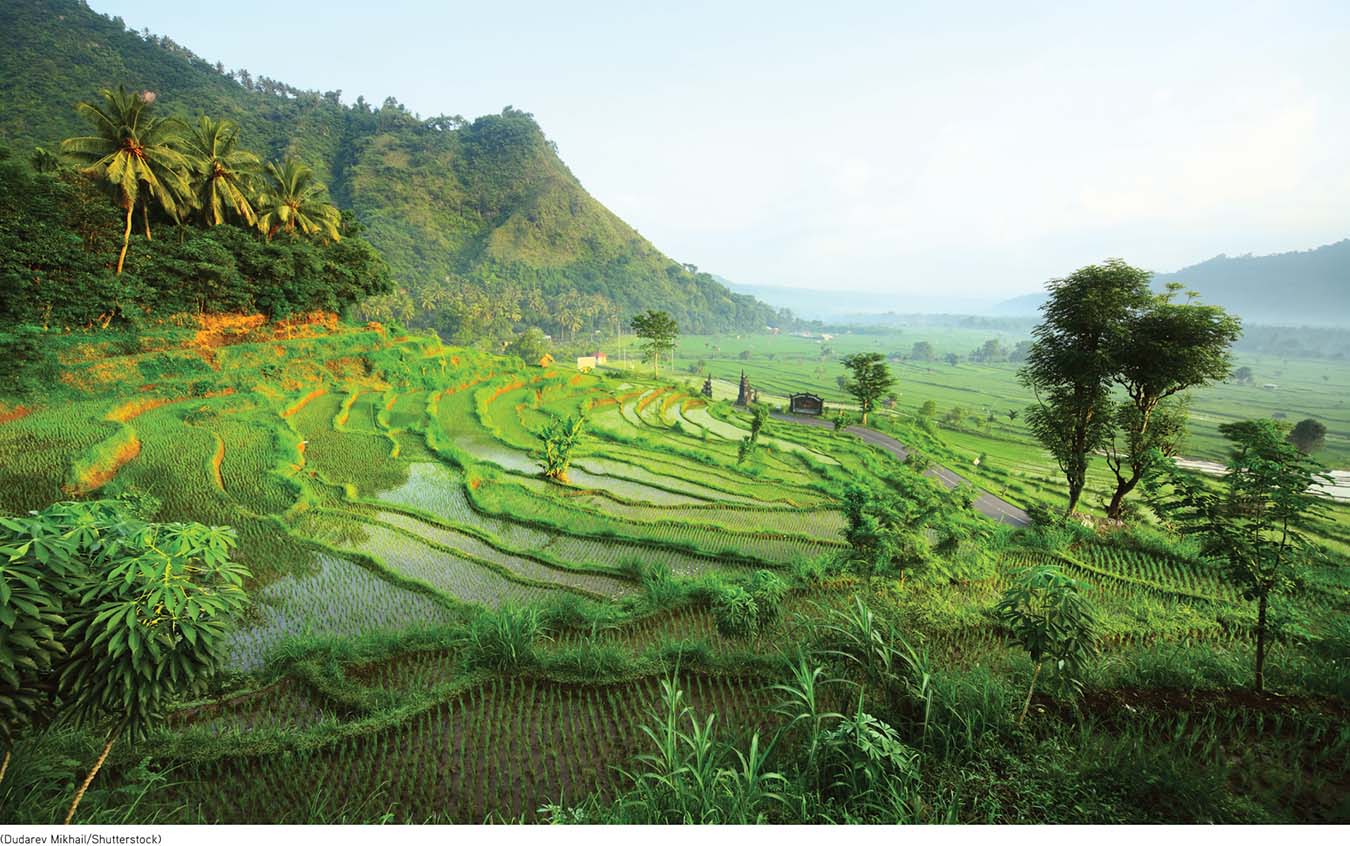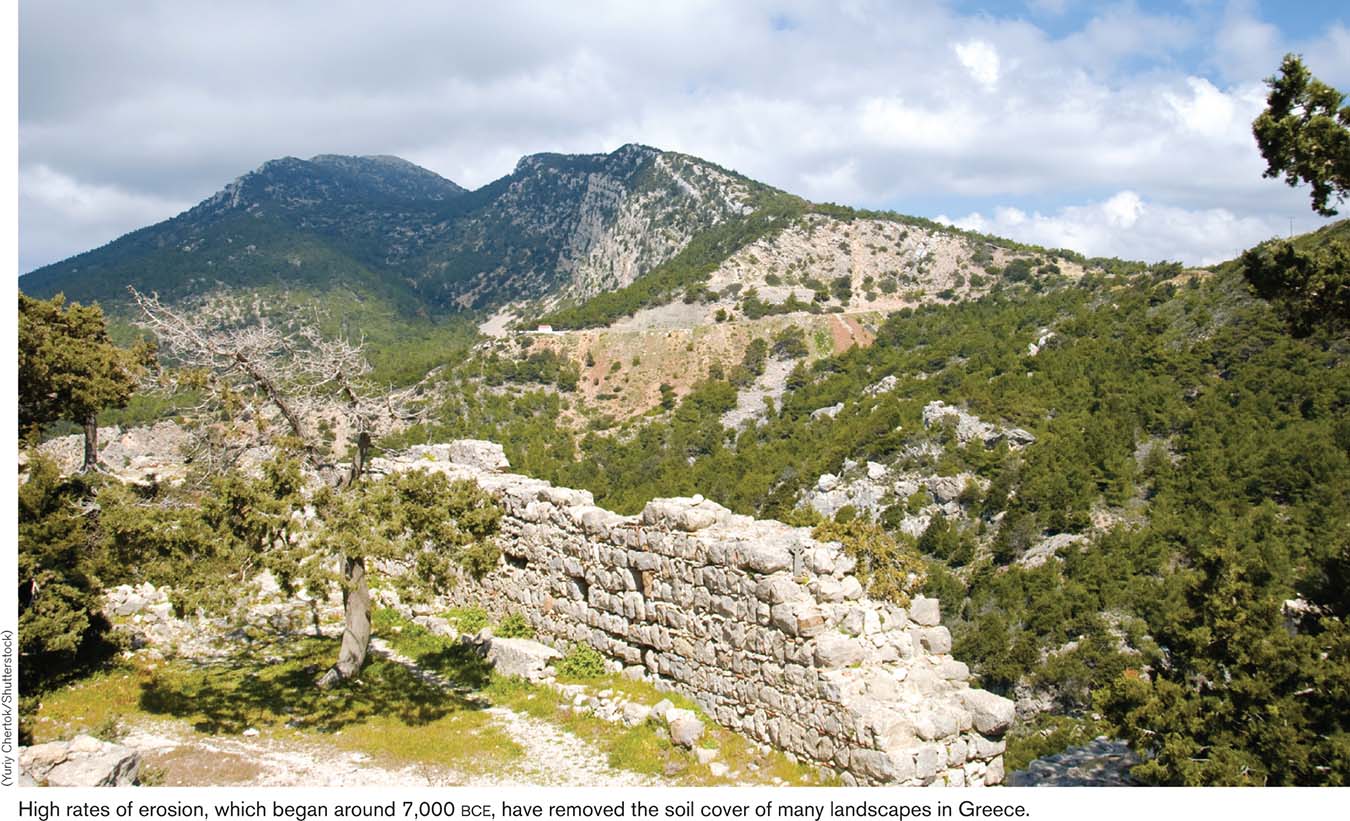Chapter Introduction
186
CHAPTER 7
Sustaining Terrestrial Resources

187
Central Question: How can we produce food and forest products while minimizing environmental impact?
 SCIENCE
SCIENCE
Describe how the physical environment and biodiversity influence the availability of terrestrial resources.
 ISSUES
ISSUES
Analyze the environmental impacts of harvesting terrestrial resources.
 SOLUTIONS
SOLUTIONS
Discuss tactics for minimizing the impact of farming, ranching, and forestry.
Terrestrial Resources Depend on Fertile Soils
188
Over 2,000 years ago, people understood that tending to the health of soils is essential to sustaining the welfare of human communities.

Sometime around 2,400 years ago, the Greek philosopher Plato gazed up at the dry, barren hills surrounding his native Athens and came to a startling conclusion about the impact of human agriculture over the preceding centuries. A once-
Like a detective, Plato gathered evidence to test his theory by scouting the countryside. He noticed that forests growing some distance from Athens included enormous, old trees and deep, fertile soils. These forests, he reasoned, are what Athens must have been like during some past era. In fact, Plato noticed that in the center of the city where large trees no longer grew, there were buildings with wide, wooden roof beams extracted from these long-
189
“A good part of agriculture is to learn how to adapt one’s work to nature, to fit the crop-
Liberty Hyde Bailey, The Holy Earth, 1915
Athens was hardly unique. The changes Plato noticed in his backyard are just one part of the global story of how humans have altered the world we live in. In the early days of our species, we lived by gathering wild plant materials for food and shelter and hunting wild animals that gave us furs and meat. In other words, we lived entirely off the production of natural ecosystems. Then about 10,000 years ago, human communities around Earth began to domesticate plants and animals, manipulating natural ecosystems to serve our needs.
Managing terrestrial resources through ranching, forestry, and farming has increased the amount of food and forest products (e.g., wood) available to human populations, as well as reduced variation in supplies of these resources. A more reliable food supply increased the rate of human population growth (see Chapter 5, page 130), which led to the development of cities. Forestry cleared land for crops and created pastures for ranching while also supplying building material and fuel. The benefits of agriculture and forestry, however, were accompanied by unsustainable environmental costs as humans irrigated lands, replaced natural vegetation with crops, and cleared forests for land to support human populations. The need for careful management of Earth’s terrestrial resources brings us to the central question of this chapter.
Central Question
How can we produce food and forest products while minimizing environmental impact?